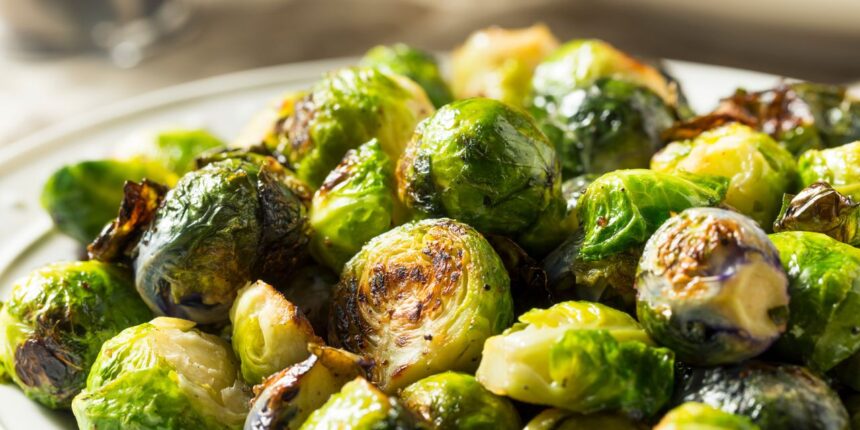While you might be more accustomed to seeing the big orange gourd on your front step around Halloween than on your dinner plate, it’s much more than spooky-season yard decor—it’s actually a solid fiber source, according to Nguyen. If you’re not familiar with cooking with pumpkin, Nguyen has a few suggestions. Try roasting it in the oven, stuffed with a filling like rice or meat, or seasoned on its own. “One roast squash lasts pretty long,” Nguyen says. You can also buy a can of the pureed stuff to save yourself some prep time. That works particularly well in baked goods like scones, muffins, sweet breads, cookies, brownies, and cheesecake bites, but it can also be adapted to savory dishes like chili, curry, pasta, lasagna, mac and cheese, meatballs, empanadas, and many more.
You can even swap in pumpkin for beans to make Nguyen’s signature “mishmash soup situation”—again, that’s a throw-together, freezer-friendly recipe featuring stock, aromatics, and seasonal veggies. Having easy and durable dishes at the ready is “a great way to assure myself that if there are days where it’s just tough to get the fiber in, I have these in the rotation,” she says.
6. Brussels sprouts
6 g fiber per one cup cooked
Brussels sprouts and other cruciferous vegetables like cauliflower are famously tough and bitter, especially when raw, so Nguyen recommends seeking out recipes and cooking methods that make them “a bit more tolerable and flavorful”—roasting, for example. “You can just let it sit in the oven while you go do other things,” she says. “Just make sure you have a good seasoning mix on.” (Sauces and dressings like balsamic vinegar or maple syrup can also help enhance the flavor, as some of these 32 recipes demonstrate.)
To add to their appeal, cruciferous veggies like brussels sprouts tend to hold up well in the freezer when fresh, so they’re well-suited for long-term cold storage, Nguyen says. Unlike some other types of produce, as SELF previously reported, “they don’t taste too mopey after you defrost them,” she explains. (You can thank their low water content for that!)
7. Broccoli
5 g fiber per one cup cooked
Like brussels sprouts, broccoli belongs to the cruciferous vegetable family, so a cooking method like roasting can help soften those stalks up and make them more palatable overall. Similar to peas, broccoli can also be incorporated into mac and cheese to make it a little more appetizing—a dish Young and her grad-school classmates called “mac and trees.” Generally, “adding in some of those frozen things when your pasta is boiling can be a great way to sneak in some additional nutrient value,” she says.
8. Kale
5 g fiber per one cup cooked
Cooked kale can be “a fabulous option” as far as a fiber source, Young says. Whether you’re boiling, sautéing, or relying on an entirely different cooking method, that process will compact the fiber content, vastly decreasing how much you need to eat to take in a solid amount. Sure, you can also get fiber from the raw stuff if you’re into salads or smoothies, but just know that the payoff is going to be way smaller: One cup of raw kale contains less than one gram of fiber—hardly an impressive figure compared to the earlier entries on this list.
9. Collard greens
5 g fiber per one cup cooked
Read the full article here



